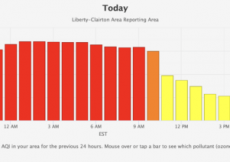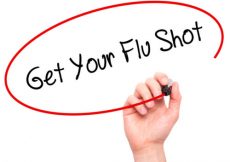April 6th, 2022
Last week, researchers at the CDC determined that the highly transmissible Omicron BA.2 subvariant now makes up the majority of new COVID-19 cases in the United States, with the fastest growth occurring in the Northeast. That’s old news in China and the United Kingdom, where BA.2 has caused the highest number of infections and hospitalizations than at any time during the pandemic. Fortunately, the more contagious BA.2 does not appear to be deadlier than previous versions of Omicron and the Delta variant that dominated last summer. And it looks like people who are vaccinated and boosted remain protected from developing severe symptoms and complications from Omicron BA.2.
As the horrible wave of COVID-19 over the winter recedes from memory, U.S. public health experts aren’t yet certain if the Omicron BA.2 subvariant will lead to a new and dangerous surge here. On one hand, a large majority of Americans have vaccine-induced immunity after receiving one or more vaccines. 82% of Americans who are eligible to receive a vaccine (5 years old and up) have received at least one jab, 70% are fully vaccinated, and 45% have gotten a booster shot, according to the CDC COVID Data Tracker. But Tara Parker-Pope and Knvul Sheikh point to other factors that might indicate a more damaging surge is coming:
One concern is that less than 70 percent of Americans over 65 have had a first booster shot, leaving a large group vulnerable, said Dr. Eric Topol, a professor of molecular medicine at Scripps Research in La Jolla, Calif. And for many people who got their booster shots in the fall, immune protection may be waning. Unvaccinated people who are counting on natural immunity from a previous infection by a different variant should know that BA.2 can easily sidestep those fading immune defenses.
Parker-Pope and Sheikh tell us how to prepare for the next COVID wave, with BA.2 or when another variant of SARS-CoV-2 eventually emerges and dominates:
Pay attention to Covid indicators in your community
Don’t wait for public health officials to issue warnings. Keep an eye on Covid-19 statistics for your county or region. An easy way to do this is to check the color-coded map [on the CDC COVID Data Tracker] that shows community levels of Covid-19 around the country.
As the map shifts to yellow and eventually orange in your area, it’s time to take extra precautions, including donning masks in public spaces and rethinking large indoor gatherings where you don’t know the vaccination status of others.
Have high-quality masks on hand
Even if you’re not wearing a mask now, check your mask supply and make sure you have plenty of high-quality medical-style masks on hand. A limited number of free N95 respirator masks are available at pharmacies and community centers
“The mask needs to go on when you start seeing case numbers going back up,” said Linsey Marr, professor of civil and environmental engineering at Virginia Tech and one of the world’s leading experts on viral transmission.
And the more people who wear masks as cases start to rise, the sooner the next wave will be over.
Order home Covid tests sooner rather than later
Each U.S. household is eligible for two sets of four home Covid tests free from the government; if you haven’t ordered them yet, get them now [here].
Get a booster (when you’re eligible)
Federal regulators have authorized a second booster shot for everyone 50 and older. The agency also authorized a second booster for people 12 and older with certain immune deficiencies.
The protective antibodies from a vaccine or an infection tend to wane in four or five months. A well-timed booster shot tells the body to bump up its antibody defenses and helps other parts of the immune system — like B cells and T cells — become better at remembering how to fight the virus[…]
Read about other steps you can take to prepare yourself and your family for the next wave of COVID-19, whenever it comes, here.




































